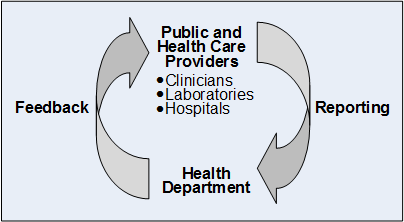Background
Epidemiologists are the scientists who are responsible for studying disease within society. In a nutshell, these health professionals give an analysis of what may be the cause of disease outbreaks so that they may combat the potentiality of the disease coming to the population for the sake of the future. Epidemiologists can be referred to as the disease detectives in the global health scale (Tanner, 2017).
They examine how infections start and they are transmitted to the individuals and they give expertise and information power to the public on the same. These health professionals have been helpful in the world as they have indulged in research for disease control in collaboration with notable health agencies such as World Health Organization (WHO). For example, during the development of Covid-19, epidemiologists worked effortlessly to trace the spread of the virus and through them, the world got critical information about the contagion rate, lethality, and mutation levels.
Epidemiologists undertake public health surveillance globally by venturing into the systematic collection, analysis, and dissemination of health data that guide many countries into deciding about the action to take in combatting major diseases (Bjerre, 2018). The surveillance cycle as shown in Figure 1, has the provision of healthcare information through clinics, laboratories, and hospitals (Tanner, 2017).
Then reporting for the major discoveries is made and feedback is given to the respective agencies. Epidemiologists are also concerned with field investigation where they get in the specific zones where they get clear information on the ground by interviewing and recording primary data from the patients. Through the analytical powers, the professionals can cluster the information and give all the relevant information concerning the particular disease.

Priority Epidemiological Interventions for Global Populations
Currently, the epidemiologists are working day and night to discover how global society can have an intervention for the following infections
- Coronavirus.
- HIV/AIDs in developing countries.
- Cancerous Infection.
- Malaria for children.
- Cardiovascular disease.
The reason why coronavirus has been a key priority for epidemiologists to venture on is that the disease has affected all the countries in the world. Through their efforts, at least companies have developed vaccines through the collaborative base in healthcare. The epidemiologists in BioNTech and Pfizer recently undertook research and analysis and were among the first companies to discover the vaccine for the killer disease. HIV/AIDs has been on the globe for a long while and up to today, epidemiologists are concerned about if there could be a permanent solution that can eradicate the disease on global levels (Costello, 2018).
Malaria is one of the deadliest diseases more so, for children who may have difficulties when growing due to economic disparities. Health professionals have been working tirelessly to ensure that the harm of the disease is combatted significantly (Costello, 2018). Other priority interventions have been for cancerous infections and cardiovascular disease.
Concepts for Demography that Affect Global Health
- Age.
- Income.
- Population dynamism.
- Sexual orientation.
- Level of daily activeness for individuals.
Age is a key determinant in the development of diseases since most of the elderly population have weak immunity due to instability in the cells as they age. The other key factor is income levels whereby, some groups are unable to live healthy lifestyles due to limited resources especially money (Bollyky, 2017). The population is also essential to mention as countries that have a high number of residents may lack a complete strategy to combat disease spread in the society. The other vital demographic elements include gender and daily engagement in activities for the global population.
References
Bjerre, J. (2018). Chronic Heart Failure: An epidemiological study of impaired oxidative stress. Clinical Cardiology and Cardiovascular Interventions, 1(1), 01-02. Web.
Bollyky, T. (2017). The changing demographics of global health. Council on Foreign Relations. Web.
Costello, J. (2018). Cardiovascular pharmacology: An epidemiological study rheumatic heart disease. Clinical Cardiology and Cardiovascular Interventions, 1(1), 01-03. Web.
Tanner, M. (2017). R&D to tackle global health challenges: roles and responsibilities for EDCTP. BMJ Global Health, 2(Suppl 2), A3.1-A3. Web.